Tense Times at Scarsdale High
- Details
- Written by Joanne Wallenstein
- Hits: 8752
 Scarsdale High School seniors who thought that the stress level during junior year was bad were surprised to find that the first semester of their senior years could be a time of even higher anxiety. Many seniors are now hearing back from colleges where they applied either Early Action or Early Decision. While in the old days students had to hunt down the mailman to find out if they had gotten in, today, rather than receiving a thick or a thin envelope in the mail, most students are finding out their fates via email or through colleges' online application portal while a very small number of schools are still relying on "snail mail."
Scarsdale High School seniors who thought that the stress level during junior year was bad were surprised to find that the first semester of their senior years could be a time of even higher anxiety. Many seniors are now hearing back from colleges where they applied either Early Action or Early Decision. While in the old days students had to hunt down the mailman to find out if they had gotten in, today, rather than receiving a thick or a thin envelope in the mail, most students are finding out their fates via email or through colleges' online application portal while a very small number of schools are still relying on "snail mail."
From my observations, students who receive good news are updating their social media pages to reflect their new status. Some tweet their acceptances, but the majority of students, if they are going to post their acceptance at all, make a change to the Facebook page. Most who find that they have been deferred, or worse, rejected, are keeping that news private.
It seems to me, that at the beginning of the college process, many students were either dishonest about their "first choice school" or just refused to tell other students where they were applying. However, now that decisions have been sent out, some bold students are publicizing their rejections. The other night, as I was scrolling through my Facebook newsfeed, I saw that someone had posted a picture of his rejection letter. As I scanned through the comments underneath the post, I saw other students make sympathetic comments like this one: "Dude I feel for you, but everything always turns out great" and, my personal favorite, "Their loss man ... but when you get in somewhere you should feel free to send that school a rejection letter". Walking around school, I constantly hear students vocalizing their condolences to others who have been rejected or deferred.
By now, I know people who have gotten accepted to their first choice school, people who have been rejected from their first choice school, people who don't yet know where they want to go, and some who have not even applied to any school yet.
Why are students and parents on edge? For Scarsdale High School students, and seniors all over the country, the term "safety school" has begun to lose its meaning. Schools that used to be seen as safe acceptances are becoming target and even reach schools for even the most qualified applicants. No surprise then that there has been a large spike in the number of schools that the average student applies to over the past 20 years.
Much of the reason for this increase is related to the creation of the CommonApp. Applying to schools through this website makes the process as easy as clicking a button; literally. The ironic part of this is that as the schools become easier to apply to, they get harder to get into. "There has been an increase in the selectivity from the top on down, so kids are trying to cover all their bases," explained Dean Oren Iosepovici of Scarsdale High School. While one might assume that this fear is handled by applying to three "definites" for every "maybe", this doesn't seem to be the case in for everyone in Scarsdale. Some kids apply to large numbers of schools just to ensure acceptances. Others are applying to as many reaches as possible to see where they will get in. Iosepovici, along with the other well-trained Scarsdale deans, make sure that each student has an even spread of safety, target and reach schools. Still, it can be hard to bring kids down to earth when fear is the root of the problem."
This week many college freshmen have been visiting SHS after having completed their first semesters away at school. They have helped to put this process into perspective for their younger peers. Justine Souchak, a returning freshman from Hampshire College said, "I think the first semester of senior year is very stressful.... it's like a curveball, you never know what's coming at you. I only applied Early Decision to one school and got in, so after that, I was done. Just know that there are so many colleges and you're going to end up where you need to be."
This article was written by SHS Seniors Megan Shelton with input from Hannah Wolloch
Indoor Do-it-Yourself Party Spaces in and around Scarsdale
- Details
- Written by Stacie M. Waldman
- Hits: 17482
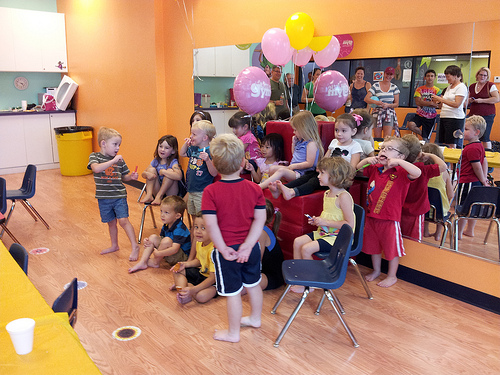 When my children were babies, lots of people told me how lucky I was that they were born in the winter because they would be the oldest in their classes, and thereby have a (purported) advantage. And then came the day when people started saying to me, "Oh, that bites! Both your kids are born in the winter? So you can NEVER have a party outside?" Which was around the same time that my daughter handed me a list of 37 kids (not really yet drop-off age, so add about 25 adults) that she wanted to invite to her themed party that I was hoping to host in my "cozy" house.
When my children were babies, lots of people told me how lucky I was that they were born in the winter because they would be the oldest in their classes, and thereby have a (purported) advantage. And then came the day when people started saying to me, "Oh, that bites! Both your kids are born in the winter? So you can NEVER have a party outside?" Which was around the same time that my daughter handed me a list of 37 kids (not really yet drop-off age, so add about 25 adults) that she wanted to invite to her themed party that I was hoping to host in my "cozy" house.
So I started to hunt for another venue and found that indoor party space rentals aren't easy to come by in the Scarsdale area as most come pre-themed with limited choices for entertainment. There are bounce houses, craft studios, sports clubs, pools, gymnastics venues, dance studios, and more, but most of these require that you use their services for your party. But what if you want to run your own party or hire entertainment like a clown, magician, or character to come for the kids and you just want space? Here's a run down of your options:
Alcott School
With a big parking lot and many available time slots, Alcott School on Crane Road in Scarsdale offers party planners a gym space for up to 25 preschool aged children. Parties can be held on weekends in the morning or the afternoon. The cost is $150 for a 90-minute party, $75 of which is for the space and $75 of which goes to the party attendant in cash. The party can be extended to 2 hours for an additional $15 paid to the staff member. You can get there 30 minutes ahead of time to set up. Alcott School, 46 Fox Meadow Road, Scarsdale. 914-472-4404.
Congregation Kol Ami
This synagogue has a gym that is almost the size of a regulation-size basketball court. Kol Ami in White Plains rents out space regularly for kids birthday parties. They provide tables and chairs as well as ice by request, and you bring everything else. Most people bring in professional entertainment for the kids. There's a large parking lot next to the building. Parties can only be held on Sundays from 12:30-2:00 PM. The cost is $200 per hour and it's requested that you tip the custodial staff, but very little clean up is required. Congregation Kol Ami, 252 Soundview Avenue, White Plains. 914-949-4717
Holy Trinity Greek Orthodox Church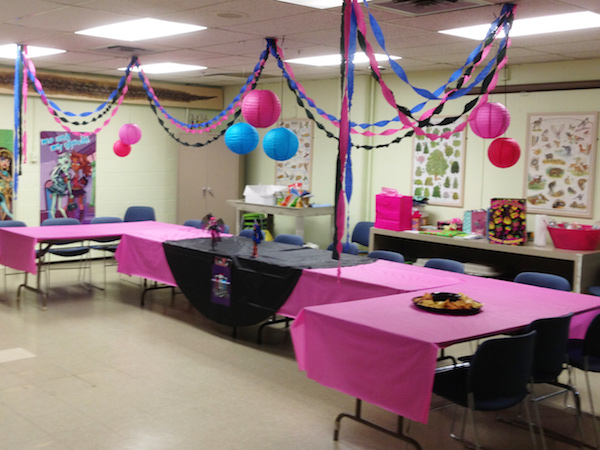
Your child can have up to 30 friends party hardy in the large gymnasium that is part of the Greek Orthodox Church in nearby New Rochelle. They provide a long cafeteria table and chairs and have free parking for guests. But reserve far in advance, because winter books up fast. Most parties run 90-120 minutes and it's requested by the church that parties have planned entertainment of some sort so that kids don't run wild in the gym. It's a perfect venue for any sports-themed party. All paper goods must be brought in and all trash must be taken out. The cost for a 90-minute party is $200 plus $30 for the custodian. Add $35 and your party can be two hours. (A $125 damage deposit is required.) Greek Orthodox Church, 10 Mill Road, New Rochelle. 914-235-6100.
JCC of Mid-Westchester
There are three social halls available for rent at the JCC. The first can hold up to 20 people, the second up to 30, and the third can hold up to 40. The cost is $300 for the first two and $400 for the larger room. More than one space can be rented at a time and the space is not limited to children's parties. There is ample parking in the attached lots. The Bendheim Theater can be rented out as well for $1,000 and can hold up to 220 people. Although people usually bring their own food, the JCC can arrange for coffee, tea, or food for an additional cost. You do not need to be a JCC member to rent this space. JCC of Mid-Westchester, 999 Wilmot Road, Scarsdale. 914-472-3300.
Scarsdale Friends Meeting House
Just down the road from Scarsdale Village is the historic Quaker Meeting House that has party rental space availability on Saturdays and Sundays after 2:30 (most weekends) and weekdays after 1 PM (most days). The relatively large party room can hold up to 30 kids and there is an attached parking lot, a gated playground and an updated kitchen. Party hosts can use the tables and chairs, but tablecloths must be provided and furniture must be returned to its original position. The party host is responsible for taking out the trash and sweeping the floor as well as turning off the lights and locking up. The space can be rented for classes or meetings as well. The cost is $40 per hour plus set-up and clean-up time (estimated to be one hour) and an additional $10 per hour for use of the kitchen. Scarsdale Friends Meeting House, 133 Popham Road, Scarsdale. 914-472-6550.
Wayside Cottage
Offering a glimpse into the past, Wayside Cottage on Post Road in Scarsdale is the home of the Junior League of Central Westchester and rents out space for larger parties (not limited to kids parties). A maximum of 75 people can party like it's the year 1720. There is very limited parking right outside the cottage, but guests can park at Scarsdale High School and walk up to the cottage (carefully, since Wayside Lane has no sidewalk or shoulder). The Village of Scarsdale sets the price for the cottage rental at $225 plus a $100 cleaning fee. Wayside Cottage, 1039 Post Road, Scarsdale. 914-723-6130.
YMCA
The YMCA in White Plains has several space options available for rent for kids parties as well as grown-up parties or meetings. The community room holds up to 125 people and has tables, chairs, and speakers that can be set up by Y staff. The cost is $125 for up to 2 hours and $100 per hour after that. The gymnasium is also available for rent and your child can have a do-it-yourself sports party here or you can hire Y staff or your own coaches to lead the party. For $150 for 2 hours, your child and up to 124 additional people have access to a gym with sports equipment available for your use (jump ropes, basketballs, soccer balls, etc.). Chairs and tables can be set up for pizza and cake. Lastly, the pool can be rented for a free-swim pool party. Up to 22 kids can be in the pool at any one time and if there are more kids at the party, they can rotate in and out of the pool for the hour. A lifeguard staffs the party. Pool parties are available on Saturdays from 3:30-5:30 and include an hour in the pool followed by an hour in the community room for food and cake. The cost is $350 for members or $425 for non-members. YMCA, 250 Mamaroneck Avenue, White Plains. 914-949-8030.
Are there other spaces you have rented out for parties? Or if you have used one of these spaces please write a review of it in the comments section below:
The Kids are All Right
- Details
- Written by Joanne Wallenstein
- Hits: 14625
 We recently had a reunion dinner of the "train ladies" from the 7:58 am Metro North train from Scarsdale to Grand Central. When I first moved to Scarsdale I became a part of this informal group of moms who commuted together and formed our own mobile coffee klatch and support group.
We recently had a reunion dinner of the "train ladies" from the 7:58 am Metro North train from Scarsdale to Grand Central. When I first moved to Scarsdale I became a part of this informal group of moms who commuted together and formed our own mobile coffee klatch and support group.
Five days a week, we arrived at the platform breathless from the race to make lunches, tell the babysitter who was going where, and put ourselves together in professional attire. On more days than not, one of us would have our skirt hem jammed into the waistband, (rear exposed), had a run in a stocking or realized that we'd left the house wearing shoes from two different pairs! All this before the workday had even begun.
When the train pulled in to the station, we elbowed the men for the seats and jammed in together for a solid 35-minute download on whatever was going on at home. One train lady used the time to apply her make-up, another to munch on an energy bar. My specialty was balancing an uncovered cup of coffee -- that more days than not-- would end up overturned on the floor, sending a stream of hot liquid trickling beneath the seats into someone's briefcase. Conversation focused on the kids, failed tests, scary teachers, bullies and sports team tryouts. As the years passed the discussion about the playground yielded to woes about middle school house placements, advanced math, the SAT's, tutors and finally to college applications.
Through it all, we wondered silently and out loud if our kids were suffering from our absence. It was a commonly held belief that the kids of working moms got the worst teachers as we were not there to buddy up to the principal or "get in good" with our children's current teachers. The same thought applied to the highly competitive youth soccer teams where our kids were often told they didn't make the grade. Were they "on the bubble" and not on the team due to the fact that we were not there to befriend their coaches?
The situation posed daily challenges. When our kids forgot their homework or their  lunch – there was often no one at home to bring it to school. So on top of bearing the guilt of not being there to help, grades suffered and stomachs growled. But since we had mortgages, tax payments, camp fees and even our own student loans to pay off there simply was no choice but to buy our monthly passes and keep the trains running.
lunch – there was often no one at home to bring it to school. So on top of bearing the guilt of not being there to help, grades suffered and stomachs growled. But since we had mortgages, tax payments, camp fees and even our own student loans to pay off there simply was no choice but to buy our monthly passes and keep the trains running.
And then there were the stay-at-home moms who could have helped out but realized their efforts would never be reciprocated. At times they didn't invite our kids into the carpools because when it was our turn to drive, it was the babysitter behind the wheel. On half days, when moms would make plans to take their kids to lunch, our kids were not invited. No one could blame them –the disparities came with the territory.
But getting back to the main question: would there be long-lasting effects for the children of working moms? Would they turn out to be less confident, less successful, or even worse, unhappy?
As I was enjoying dinner with my former train buddies the other night I started to reflect on that question – and inquired about all of their children. As it turns out, for the most part they were doing well, in fact very well. Most had graduated college, or graduate school and were gainfully employed at jobs they actually enjoy. After work they play on teams, play in bands and party hardy. If they lost out in anyway because we worked when they were young, it is difficult to see the impact now.
Though memory has cast a rosy glow on the time my three kids were home, it now seems that perhaps the children accrued some benefit from being children of working moms. They learned self-sufficiency and people skills, as they had to adapt to a series of babysitters who took the place of their moms. When they had a problem with a teacher, they couldn't call on us to step in so had to find a way to resolve it themselves. Maybe they also saw that work had its rewards and modeled their own professional aspirations on their parents' success. Whatever the reasons, as parents, our decision to work does not appear to have adversely affected our children's lives.
I asked a few of the "train moms" for their thoughts on this issue and here is what they said:
"It was quite the challenge jugging motherhood with a demanding career. And certainly, I had moments when I ruminated on whether my absence from the girls was harmful to them in any way. I simply didn't know. There were no studies, no longitudinal data surrounding this issue. We were on uncharted ground. Here's what I know now. I have two, healthy, loving children, each prospering in their respective careers. They have made it clear that my path influenced theirs, for which they are grateful. So am I." (P.N.)
"My working gave my son and daughter the freedom to develop their individuality without worrying about my reactions to their missteps. Had I been a stay at home mom I would have been overly invested in my children's every action. This would not have been good for my kids or me. So my job gave us the distance we needed to develop and maintain our authentic selves." (M.F.)
"Finding work/life balance is essential. My sons understood that my career was part of who I am and respected me for it. They knew what I was working on and showed interest in it. Over time, they had as many opinions about my projects as I had about their homework. What worked for my family was spending a lot of time together – both quality time and just time." (A.S.)
"There are many paths to happiness. We chose the one that was right for our family. My work has always been an important part of who I am. When you feel good about what you do and what you have accomplished your kids feel it and flourish. Oh, and having a great husband and babysitter doesn't hurt either." (S.D.)
Of course this is not a scientific study and the sample size is not statistically significant. But anecdotally, it does appear that the children of the working parents are thriving along with their friends whose mothers were home. All of us might tend to congratulate ourselves and we did. After all those frenzied train trips, moments of apprehension and panic, we can now safely say the kids are all right.
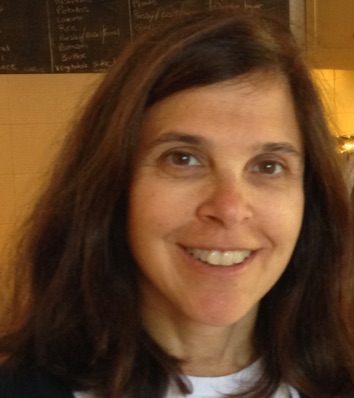 Joanne Wallenstein is the Publisher of Scarsdale10583.com and a former train lady who worked in the city when her kids were at home – and now works at home while her kids work in the city.
Joanne Wallenstein is the Publisher of Scarsdale10583.com and a former train lady who worked in the city when her kids were at home – and now works at home while her kids work in the city.
Confessions of a Stalker Mom
- Details
- Written by Marjorie Rosenblatt
- Hits: 5551
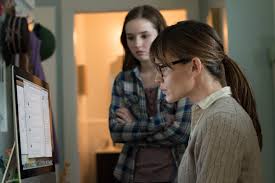 Scarsdale mom and physician Marjorie Rosenblatt contributed the following article on how she keeps track of her kids: I was never one of the "powers-that-be" mothers, able to ensure my child's role in the school play or acceptance on a team as a result of personal contacts or social status. Nor was I ever a helicopter parent, preoccupied with the minutiae of the everyday lives of my offspring. I attended as many parent-related meetings and school performances as I was able. If I missed something, it was not lack of interest or desire for involvement but rather my rigorous work schedule that kept me away.
Scarsdale mom and physician Marjorie Rosenblatt contributed the following article on how she keeps track of her kids: I was never one of the "powers-that-be" mothers, able to ensure my child's role in the school play or acceptance on a team as a result of personal contacts or social status. Nor was I ever a helicopter parent, preoccupied with the minutiae of the everyday lives of my offspring. I attended as many parent-related meetings and school performances as I was able. If I missed something, it was not lack of interest or desire for involvement but rather my rigorous work schedule that kept me away.
As a result, we ate dinner as a family every night, during which my children were subjected to painstaking interrogation regarding the details of their day's occurrences. The fact is, however, that I was the primary breadwinner and therefore, my employment had to be a priority, leaving my husband to serve as the Friday "pizza mom," the parent organizing "learning from our differences" and the yearbook photographer at the elementary school.
Thank you social media!! Now, with the ever-growing number of communication-oriented applications, as my children get older, I have discovered myriad ways to spy on them – to make up for lost time, if you will. I have become an obsessive electronic stalker. I wake up and check Snapchat to see if my son, now a college freshman, has posted any of his numerous drunken snaps to his story.
I proceed to see how many of his new snarky tweets can be found on Twitter. Instagram is the next stop on my surveillance train, where I view photographs posted by my ninth-grader, and then on to Yik Yak, where my two college student's universities are readily accessible under the heading of "my peeks." There I have the opportunity to learn what is "hot" at their schools, while silently playing the always-fun game – "guess which yaks were posted by my own children." (For those unfamiliar, Yik Yak is an anonymous posting site, designed for college communities.)
Facebook is next, where I view the walls of all of my children; I note new friends (whose walls I may then also peruse), recent posts and, of course, photographs. Not surprisingly, I am not infrequently met with a look of disgust when my older daughter mentions her friend Jim, for example, and although I have never actually met either, I ask "Jim Smith or Jim Jones?," oddly familiar with both from having previously surveyed their Facebook pages.
I may also review the Facebook pages of my daughter's a cappella group, or my son's fraternity, just incase a minor detail of their lives has escaped me. Finally, before I retire for the night, I examine Find My iPhone, intended to help trace a lost phone, but employed by yours truly to find comfort in the fact that my children have made it home safely yet another night.
Why, one may ask, do my children consent to what they refer to as my "creeper" behavior? The choice is not theirs. It is our house rule that when one gets Facebook, he/she must accept his/her parents as "friends." Similarly, as we pay for the iPhones, we must be allowed to track them if lost. Neither my husband nor I ever comment on what we learn from our voyeuristic activity; it is our hope that as long as we stay in the shadows, the multitudinous modes used to follow my children remain in their unconscious...out of sight, out of mind. Alternatively and, I suppose, preferably, as they become adults, they simply may not feel they need to maintain secrets, as they did when they were younger.
I (and others) often question why I participate in such obsessive behavior. An easy answer would be that I feel as if I have missed significant pieces of my children's youth, for which I am now over-compensating. It is also possible that I am overseeing, trying to make sure that they are employing good judgment and avoiding trouble. More accurately, I believe, is a need to remain connected with my children as each day they inch toward independence. Perhaps I am trying to diminish the sadness and loss that I feel, as they become more self-sufficient and create their own autonomous worlds. There are evenings when I crave having their once tiny bodies snuggled up against me in search of comfort. I am no longer the first face they see in the morning, or the last at night; in exchange, I have made them my first and last association of the day.
And so I stalk. Snapchat. Twitter. Facebook. Instagram. Yik Yak. Find my iPhone. These sites are enablers, supporting my pathology, and providing me a pseudo-sense of continued involvement in the daily lives of my children. The tiny bits of information I glean serve as few stitches in the gaping hole in my heart.
Time to go...social media awaits...
 Marjorie Rosenblatt is a physician, wife and mother of three. She enjoys writing about her experiences and passions, including (but not limited to) her family, medicine and karate.
Marjorie Rosenblatt is a physician, wife and mother of three. She enjoys writing about her experiences and passions, including (but not limited to) her family, medicine and karate.
This post originally appeared on Grown and Flown. Find them on Facebook and Twitter.
Parenting Tech-Savvy Kids
- Details
- Written by Barbara Kapetanakes
- Hits: 7465
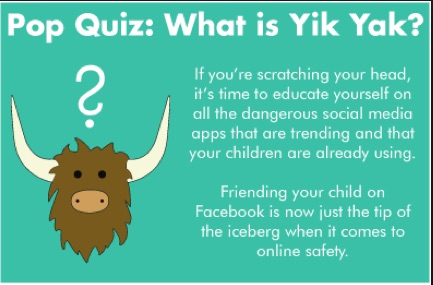 This article was written for Scarsdale10583 by Barbara Kapetanakes, PsyD.
This article was written for Scarsdale10583 by Barbara Kapetanakes, PsyD.
I heard through the grapevine recently that one of our local school districts had to deal with the malicious use of new technology. Just a day after one of my adolescent patients told me about YikYak, a new anonymous social media app, someone used it to make a threatening comment and the school was put on alert. While many of these anonymous social media outlets monitor their sites for threatening or inappropriate content and remove it, they obviously cannot do this immediately, and with social media being what it is, information flies through cyberspace in seconds, making the process of removing content too little, too late. Even if it's a prank, which it usually is, there is wasted time, manpower, and angst spent trying to find the source and ascertain safety.
There are other anonymous apps as well such as Whisper and Secret, as well as an app that allows people to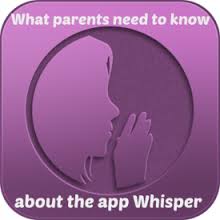 share pictures or comments for only a few seconds before they disappear, called Snapchat, which many teens use for sexting and sharing risqué pictures. Even with programs such as Facebook, a person can make up a fake persona to hide behind. Because of my profession I use Facebook with a fake name and keep my privacy settings how I want them, but I could easily have a half dozen accounts with different email addresses and use whatever pictures I want to create a persona. In fact, it is so easy to steal photos and other material off the Internet that not too long ago a teenager was arrested for taking pictures from a photographer's professional site and using them on her own blog where she lied to get sympathy. The photos were of the photographer's young son, but the teen used them claiming to be a woman in her 30s who had lost a child to cancer. She set up an entire site dedicated to this supposed dead child and blogged about her loss. The site caught the attention of other grieving parents as well as sympathetic souls wanting to provide support. Only by dumb luck did she get caught when a friend of the photographer was doing a web search for something and saw pictures of a familiar little boy.
share pictures or comments for only a few seconds before they disappear, called Snapchat, which many teens use for sexting and sharing risqué pictures. Even with programs such as Facebook, a person can make up a fake persona to hide behind. Because of my profession I use Facebook with a fake name and keep my privacy settings how I want them, but I could easily have a half dozen accounts with different email addresses and use whatever pictures I want to create a persona. In fact, it is so easy to steal photos and other material off the Internet that not too long ago a teenager was arrested for taking pictures from a photographer's professional site and using them on her own blog where she lied to get sympathy. The photos were of the photographer's young son, but the teen used them claiming to be a woman in her 30s who had lost a child to cancer. She set up an entire site dedicated to this supposed dead child and blogged about her loss. The site caught the attention of other grieving parents as well as sympathetic souls wanting to provide support. Only by dumb luck did she get caught when a friend of the photographer was doing a web search for something and saw pictures of a familiar little boy. Considering the amount of fraud that can go on online, as well as anonymous cyber-bullying, parents are often confused as to how to protect their children. For one thing, the kids seem to keep up with technology much more quickly than their parents, and by the time a parent learns about an app that may be of concern, the child is on to the next one. In addition, as kids get older they want and need more freedom so that they start to make their own decisions, engage in unsupervised activities, and otherwise get ready for the outside world. It's a very difficult line that parents have to walk—letting their kids grow up while trying to keep an eye on what's going on.
Considering the amount of fraud that can go on online, as well as anonymous cyber-bullying, parents are often confused as to how to protect their children. For one thing, the kids seem to keep up with technology much more quickly than their parents, and by the time a parent learns about an app that may be of concern, the child is on to the next one. In addition, as kids get older they want and need more freedom so that they start to make their own decisions, engage in unsupervised activities, and otherwise get ready for the outside world. It's a very difficult line that parents have to walk—letting their kids grow up while trying to keep an eye on what's going on.
While technology is a far cry from what it was when most of today's parents were coming of age, the way that you would protect your child's safety and health is still very much the same. Though most kids use only their cell phones today rather than home phones, you can still keep track of who they are communicating with and what is happening in their lives. For one thing, you can take your child's gadgets away after a certain hour. Yes, some kids use their phones for an alarm clock, but there's a solution for that. It's called an alarm clock. While I may have tried to sneak in some late phone calls as a teenager, if I talked too loud I'd get caught. Today, kids can (and do!) text well past midnight, some texting virtually all night with friends, and their parents are none the wiser. Taking the phone at bedtime, unplugging the computer, and otherwise removing distractions makes it less likely that your child will be up during the night chatting online or sexting on Snapchat.
Presumably if your child has a phone and computer, you are paying for this. From time to time check the call and text logs by going into your account through the carrier's website to assess the amount and patterns of usage. Typically my mother answered the phone and took a message if I was not home, so she had some sense of who was calling, but today's parent can check the phone logs and see what numbers come up a lot, or at odd times. When did we become a society who has no idea who our kids are talking to because we all have our own personal phones and never use anyone else's? Which brings me to...
....pick up your child's phone if it rings. Isn't it strange that we live in a world where most of us would not pick up our spouse's, child's parent's, or sibling's telephone? What could be so personal? Barely a decade ago we shared phones with the rest of our families. If a call came in it could have been for anyone in the household, so anyone answered it. In fact, kids were often the first to go running for the phone hoping it was for them. Not too long ago a teen lamented to me that she had her phone taken away as punishment for something or other, so she was unable to call any friends because she only had their numbers in her phone. She needed to speak to a friend about a legitimate school concern and could not. I suggested that she find out the house number and call the friend there from her own home phone. She told me that this behavior was "sketchy," because no kids called to or from landlines anymore. Bizarre. Calling a phone where a parent might answer and your supposedly innocent call would be public knowledge is more "sketchy" than calling cell to cell where the call can be "Kept on the DL" as they say.
You can check the history on your computers and put parental controls in place so your child can't go to sites that would be inappropriate. Many families have computers in high-traffic areas of the house so that parents can casually glance at the screens while their children are using them. Also, with a parent close by, kids are less likely to hop onto a site or app and start sending inappropriate messages or get involved in bullying.
If you find out your child has gotten in over his head—whether by misusing social media or as the victim of cyber-bullying, treat it as you would the same situation without technology. What would you do if you found out your child was being bullied on the playground? What would you do if you found out that your child took a nude Polaroid and gave it to her boyfriend? Technology does complicate things, since the Polaroid may have been shared with a couple of kids in a locker room in the past, but the jpeg can now be sent to the entire school with the touch of a button. And while a bully on the playground is a known entity, a bully online could be anonymous or using another child's name. Don't be afraid to get the school involved, as they may have a handle on how best to do damage control—this is not likely to be the administration's first rodeo.
It's also very important to educate kids in the first place. I take many opportunities to pursue this topic when it comes up with kids I see in therapy. Most are not looking for trouble, they truly have no idea how much information they make available on the Internet. Think about prom and graduation season—how many beautiful photos do parents and kids take by the limo, in the cap and gown, in the beautiful dress and then post online? Has it ever crossed your mind that in those photos could be your home address, your license plate, the sign on the corner of your street? When you and your children post those pictures on social media, what privacy settings are used? Who can comment on them? Once, in doing a presentation for young children on Internet safety I showed them how easy it was to take something off the Internet and make trouble for someone by right-clicking and saving a photo off my cousin's Facebook. I then used an editing program to write insults on the photo. Then I went to strangers' pages and again "stole" their profile or other pictures, and downloaded them onto my computer. Once something is on the Internet it can be downloaded, and if your child has 1500 "friends" or "followers" all those people have access to that information. Educate your children about being careful and smart. Before posting a picture make sure there's no information you wouldn't want out there. You would freak out if your child gave out your home address, but what about those lovely brass numbers in the background behind the beaming graduate, or the street sign off to the side?
Parents often say "we live in a different world today" to justify helicoptering over their kids. Yes and no. We do live in a different world, a world where you can go online and find out if convicted sex offenders live in your town—that, to me, sounds like a safer world in some respects. Technology does make this world different, and it changes the way humans interact, including children and teens who are still working out social interactions and the nuances of relationships. Parenting has to keep up with new technology, but the bottom line is not that much different. When my parents put a separate phone number in my bedroom, that was the latest technology, and they continued to parent me as they had when we shared the one phone on the desk. Today's kids use newer and newer technology, but you should still be aware of the technology and supervise them as appropriate for their ages. Kids will always get things past their parents—that's reality—but don't underestimate parental intuition, benign snooping, or direct questioning. The same way my mother warned me not to keep my keys in my purse while riding the subway or walking around, since my purse contained ID and a mugger could run off with my address and keys, today's parent has to advise his children about how to remain safe in different, more modern circumstances. I STILL keep my keys separate from my wallet, and hopefully we will teach the next generation how to remain safe in the swirling eddy of the information superhighway. It's here to stay, so we may as well learn to coexist.
Dr. Kapetanakes is a psychologist practicing in Sleepy Hollow. She specializes in working with teens and young adults, school issues, divorce issues and divorce mediation, and neuropsychological evaluations.
Disclaimer: Although Dr. Kapetanakes is a board member and past president of the Westchester County Psychological Association (WCPA), the views in this article are hers and not the views of WCPA. WCPA is a professional organization of local psychologists that furthers the study and practice of psychology through workshops, meetings, community outreach, and involvement on state and national levels.












